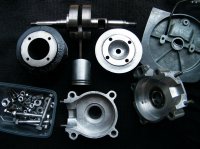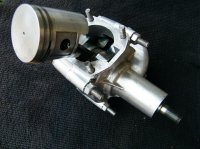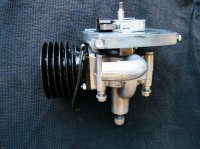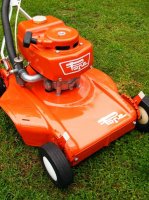The rotary valve is the King of two-stroke induction systems. A broad powerband can be achieved by opening the valve a few degrees before the transfers close. This helps at low RPM (under peak delivery ratio) to reduce the suction in the crankcase caused by the rising piston from pulling mixture back out of the cylinder. However, a reed valve induction can open even earlier, as soon as there is a pressure drop in the crankcase - that's why reed systems are known for good low-end torque.
However, a reed has mass and at high RPM it reacts slower and the actual timing is closer to that of a piston port engine. Plus, the reed presents an obstruction in the intake tract. The rotary has no obstruction and at high RPM is opening by the time the transfers close and is full open and flowing as the piston hits maximum piston speed - it can really flow the mixture. The rotary valve can get full crankcase filling by 65-75 degrees ATDC.
The Dolmar 6100 has TWO intakes, one is the reed and the other is the piston port. The reed can improve the low speed torque and the piston port can provide a straight shot into the crankcase without any obstruction. The combination of the two systems presents an intake that closely approximates the rotary system. With a bit of work, it may be able to duplicate it without the weight disadvantage of the rotary.










